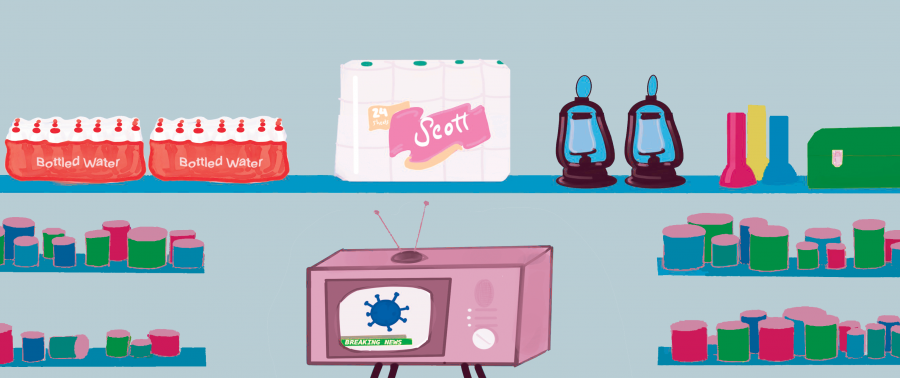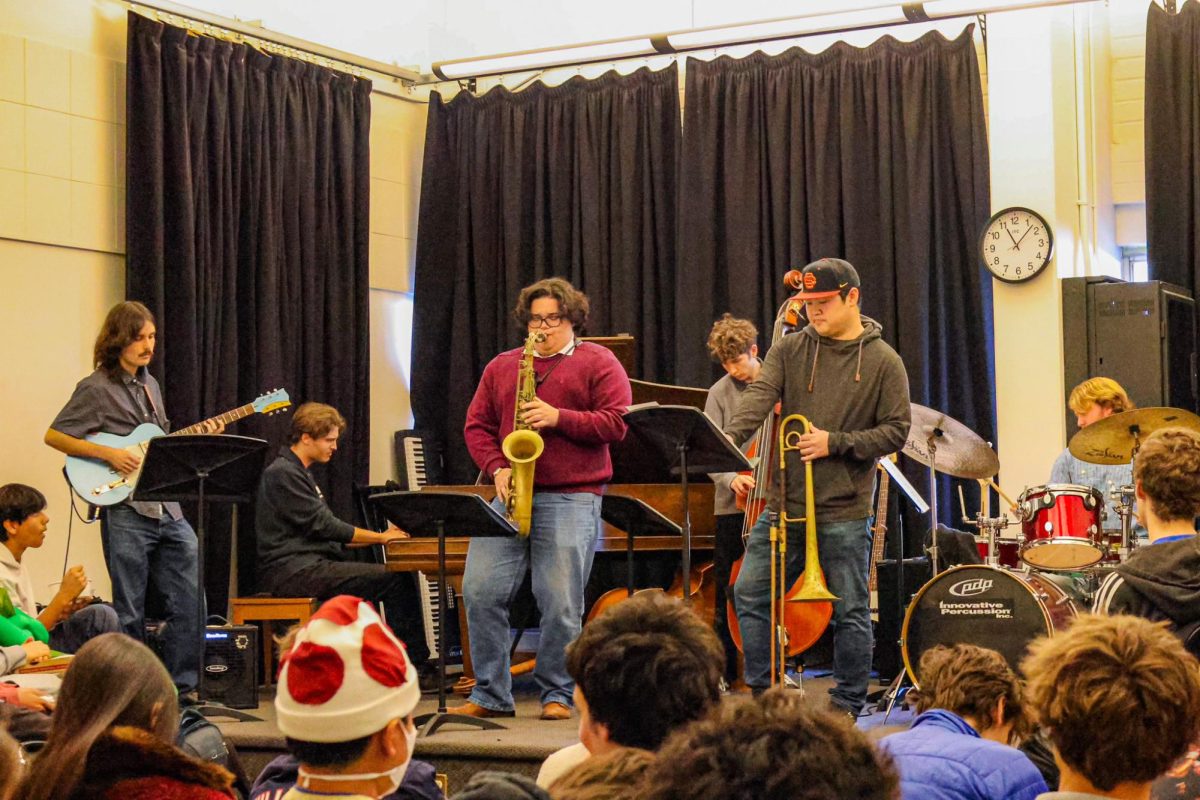Honest News
Coronavirus became front-page news for American media outlets mid-February, just as cases were cropping up around the United States. However, Diego Ahmad ’20, whose parents are both medical professionals, first heard about the virus when it was still limited to Wuhan. From the beginning, Ahmad said he has empathized with journalists’ difficult task of cutting through the vast amount of misinformation surrounding the pandemic.
“I think an honest news media is absolutely critical in times like these,” Ahmad said. “The danger is when they’re not able to help people accurately sort out truth from lies and misconceptions.”
According to The Washington Post, as of April 3, President Trump had made an average of 23 false or misleading claims per day since the outbreak hit the U.S. Ahmad said he believes that this rampant misinformation, pushed by both the president and White House officials, creates a dangerous environment that fosters confusion within the public.
“This puts [journalists] in a difficult situation during the pandemic,” Ahmad said. “They are often put in the uncomfortable position of not being able to show the president’s press conferences live without spreading dangerous disinformation.”
Shift in Perspective
Janice Min, former Co-President and Chief Creative Officer at The Hollywood Reporter, said that the misinformation being spread by the President around COVID-19 has resulted in a radical shift—restoring the public’s perspective of main-stream media as a reliable source of information.
“Trump was a real turning point in this conversation, where maybe for the first time in a while, people began to see that news media is fairly reliable and that sometimes what comes out of the mouths of our elected leaders is not,” Min said. “Trump has done a really good job of creating enough confusion about news to plant the seeds of doubt in a lot of people’s minds. I think one of the benefits to news about coronavirus is that science largely does not lie and is very fact based. There is not a lot of opinion that goes into science, there are hypotheses and theories, but science is pretty black-and-white.”
Contradicting Stories
At the beginning of the outbreak, Violet Barron ’22 said she found comfort in the data that the news provided. However, she said she no longer reads the news because she finds it to be highly contradictory, providing no unique insight into the current crisis.
“Nowadays, you can find conflicting stories all over the internet,” said Barron. “Some [reports are] saying this will last well into 2021, and others [are] talking about reopening the economy. With all of these contradicting reports, I feel like there’s no point anymore in reading the news.”
Riley Bock ’21 has also distanced herself from news coverage, saying that it causes her stress and has the potential to incite fear within the general public.
“While I think it is very important to report on COVID-19, I do not think it should get 24-hour coverage,” Bock said. “There are other stories to report, and I think repetitive coverage just instills fear. The news coverage is what convinces many Americans to follow social distancing practices and make them aware of the world’s situation. However, I think some news outlets are walking a fine line between being thorough and causing panic.”
Mass Media
Upper school history teacher Dave Waterhouse, who teaches Mass Entertainment in America, said that global crises have historically increased news viewership in both print and television.
“Crises always help bring readers and viewers to the news,” Waterhouse said. “So, the media often brings attention to things that might be considered a crisis or exaggerates things that really are critical.”
This pandemic has proven no different than other crises, as Min said viewership for both news and television has increased since the outbreak first intensified within the U.S. She attributes this to a motivation to stay informed, as well as the increased time individuals now have to consume information.
“I think one of the interesting things to note is that I think we have seen, over the past year, a lot of fatigue in news around Trump and around the impeachment,” Min said. “It was beginning to have a little bit of a white-noise effect, where people can have the ability to tune-out. [Coronavirus] has brought people rushing back to news consumption because this is literally a life and death matter to be informed now.”
The Impact of Social Media
Waterhouse also said that while mainstream news outlets are the most reliable source, the rising popularity of social media and the internet as forms of news can spread misinformation, promoting opinions as facts.
“On the one hand, the mainstream media has provided a lot of accurate information about the pandemic—more so than the president,” Waterhouse said. “On the other hand, the fringe media have spread many dangerous rumors and unsupported speculation, both of which have been highly counterproductive.”
Partisan Divisions
Claire Wacziarg ’21 said she agrees with Waterhouse, and is similarly concerned that many teenagers and young adults tend to get their news from social media sites, which often promote opinions over facts. However, she finds the lack of uniformity regarding White House press coverage among all the news outlets to be troubling.
“What has upset me recently is that the virus has become a partisan issue, divided along Democrat and Republican lines,” Wacziarg said. “I’ve been noticing that Democrats tend to emphasize the impact the coronavirus will have on people’s health and the cost the virus will have in terms of lives. [Meanwhile] the Republicans, namely Trump and his base, are emphasizing the cost it will have on the economy. ”
Wacziarg also said that she is often frustrated with the divisions that news coverage can create, and she maintains that unbiased news is the best way to remain connected to world events.
“I feel like often the news can be partisan in a way that vilifies the other side,” Wacziarg said. “[That’s why] finding more centrist news outlets has been important for me. I think that the news should be able to be informative and, as best as possible, not panic-inducing.”
Good News
Barron said she agrees that the news has the potential to create panic, but believes that the media has the capacity to bring people together. She said she thinks that YouTube series like John Krasinski’s “Some Good News,” which features feel-good stories about the kindness in humanity, can significantly impact the mental health of its international audience.
“During global crises, I think the news should be a rock for people,” Barron said. “I’ve realized that good news, whether it be about people going out of their way to help others, or how people are making the best out of their quarantine, is really important right now. Especially during this quarantine, everyone could benefit from hearing good news, even just to remind them that good things are still happening, even when it feels like the whole world has been put on pause.”





























